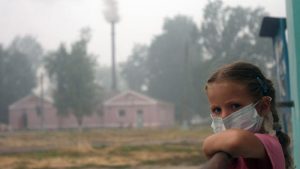More than 90% of households in Ethiopia still depends on some form of solid biomass, i.e. firewood, agricultural waste, animal dung, etc., to fulfill their cooking energy needs. This is done in the traditional way, mostly on the wasteful and smoky three-stone open fire places, and the negative impact of such practice has dire health effects. According to the World Health Organization (WHO), for example, there is 72,400 deaths per year, second largest cause death, in Ethiopia from hazards due to poor indoor air which mainly results from the smoky cooking activities in the house (WHO, 2009). While these deaths are the ultimate risks, they are the results of one or more types of sicknesses and injuries caused which could be dealt with easily and in an inexpensive way.
Like many of her neighbor in Ude kebele East Shewa Zone Oromia region, a rural agriculture based community, Meseret Abebe, married and a mother of two, relied for many years on a three stone open fire for cooking in the house ‘’ it was so hard to look around and just breathe without feeling the smoke burning the eyes and throat, Meseret said’’ Meseret was just one of the many people in her village who got Mirt with chimney one year ago.
Belayenesh Asefa, another woman, a mother of eight children and in the Ude Kebele, is also full of praise for the improved cooking situation in terms of less smoke, fuel consumption, convenient for baking and safety. ‘’I am so happy with the improved stove and able to bake without any problem said Belaynesh ’’

photo credit: CBS News
In Ethiopia, women are in charge of household chores. The women still do the cooking by burning biomass with the traditional cook stoves. They get a very large amount of smoke coming out from the cooking, most of the time their children’s are also around them during the cooking they are also exposed. This high-level of exposure is the risk factor forced to endure diseases such as respiratory infections, chronic obstructive pulmonary disease (COPD), heart diseases, lung cancer, and acute lower respiratory infections in pregnant women, new mothers, and children. Also, there is a high level of skin burns to women’s and children’s.
Most of these health effects and resulting deaths could substantially be reduced by using improved cooking stoves. These simple and affordable ICS reduce the risks by reducing the smoke that otherwise would be produced by the traditional practices.
EnDev Ethiopia has developed a low-cost chimney technology adapted to the existing Mirt stove with efficient combustion and 46% fuelwood saving efficiency over three stone open fire. The newly integrated chimney removes a harmful smoke and minimizes pollutant levels from indoor cooking. This improves the indoor air quality considerably with more safety for inside cooking. Access to modern energy solutions helps to create safer, healthier communities in many ways especially by foraging women and their children healthy. It is also important for women empowerment by reducing their burden.
Read A ‘penny’ to invest on climate
Dawit Dagnew
Knowledge Management & Communication Advisor Energising Development (EnDev) Ethiopia.
Energising Development (EnDev) Ethiopia.
